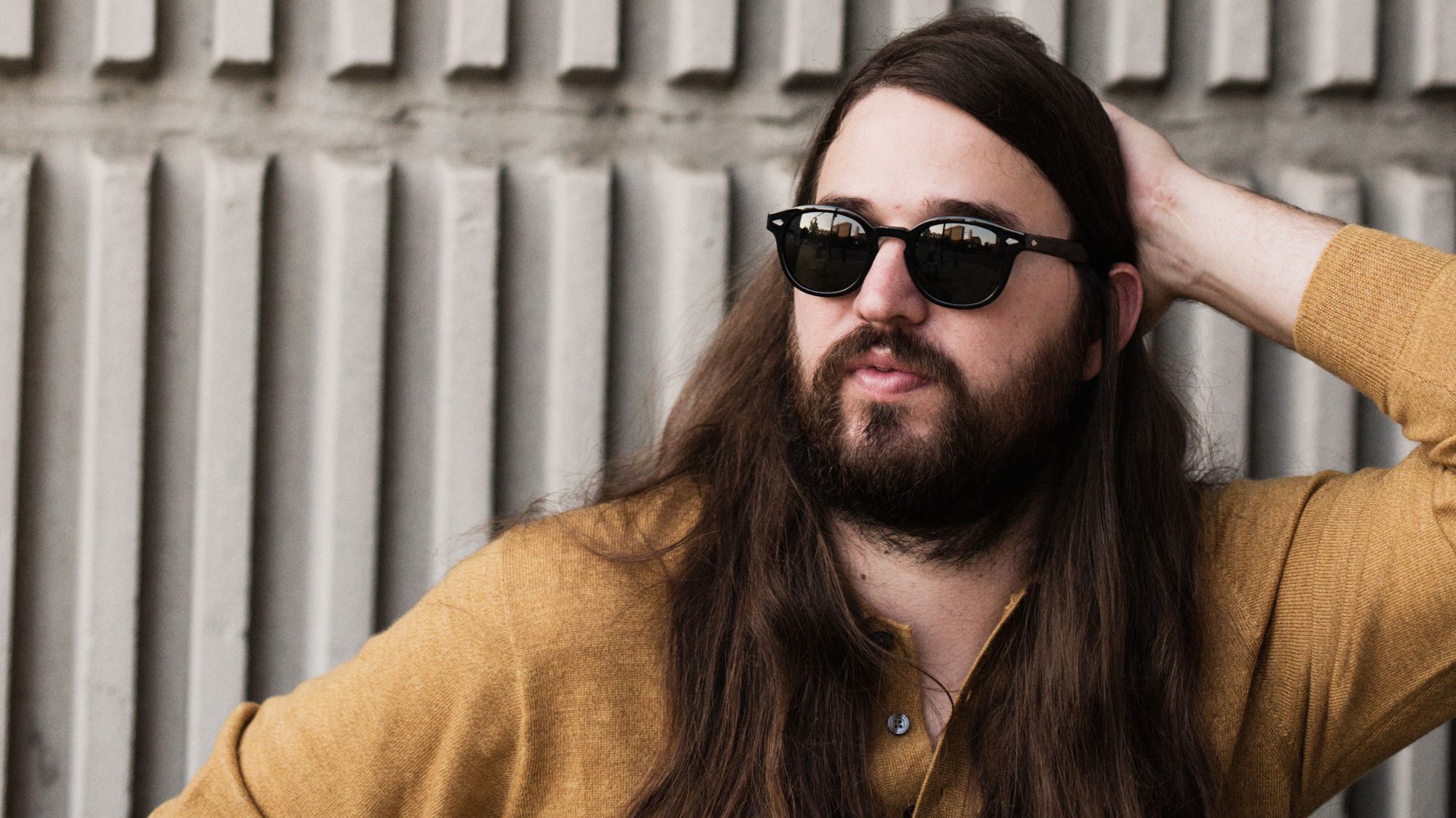For all of its considerable strengths, Matthew E. White’s Big Inner is not a songwriter’s record. Not in the traditional sense, at least, and you get the impression listening to the Richmond-based singer and bandleader that the traditional is his favorite sense. You could be deeply moved by the ten minutes of “Brazos,” say, with its cinematic string intro and its brassy horn section and White’s gently lulling voice, without ever knowing that it was built around the refrain to Jorge Ben’s “Brother.” But the fact that White chose to craft his debut album’s dramatic high point around someone else’s lyrics—moving though they may be in the context he creates—might suggest a certain uneasiness on the singer’s part.
That shouldn’t be a problem anymore. When he started putting Fresh Blood together, White dedicated himself to songcraft. Big Inner was a glossary of global soul textures, but on Fresh Blood, White uses that language to tell better stories. “Tranquility,” which was written about the death of Philip Seymour Hoffman, floats along gently before flatlining into no-tempo narcotic noise and resurfacing into soft harmony. In “Fruit Trees,” the band stamps out their encouragement as White and a lover come together beneath “the radiance of an orange tree.” The percussion pounds along to the female vocalists’ “la-la-la”s and White delivers a lusty order for “Two Coca-Colas in the shade / With crushed ice” in his subterranean coo; you may want to leave your turntable’s dust cover up, lest it get steamy.
When we caught up with him, White had just premiered Fresh Blood with a thirty-piece ensemble at Brooklyn’s BRIC, a show he says “went so perfectly that it’s almost hard to remember it.” We pulled him away from his much-leaner traveling band and a barbecue buffet somewhere on the road between Charlotte and Savannah to ask him more about the ideas, artists, and musicians that inspired the new album.
An aggressive approach to songs and songwriting
Matthew E. White: From the beginning, there were a few things that were important about Fresh Blood, and one was to get to more extremes on the spectrum, to have darker moments and lighter moments and louder moments and softer moments. To just sort of stretch in that way. I also wanted the record to be about songs and to really dive into songwriting and try to be aggressive about that — making songs that are really worthwhile. For me, Marvin Gaye’s What’s Going On is a great example of really purposeful, powerful songwriting meeting really heavy-handed production. But the songwriting isn’t lost. It’s only magnified. And that’s a really nuanced thing. That’s a balance that I’m striving for quite a bit.
Classic punk
In some ways, I have a Lou Reed quality in my vocal delivery—he’s very dry. There are some things he did production-wise that worked with his vocals, just because he’s not the greatest singer in the world. And I’m not the greatest singer in the world. He sings really dry and really detached in a lot of ways, and I sing really dry and detached in a lot of ways. But there’s also a groovy quality. As much as Lou Reed is a rock-and-roll guy, there’s an R&B nature to those productions that’s really cool to me.
“Some stylistic things are absolute truth; they just work. And some things aren’t; they just work for a certain time. There are rules that worked with Bach, that worked with Mozart, that worked with Stravinsky, that worked with Fats Domino, that work with Kendrick Lamar.”
Henri Matisse’s “cut-outs” and Pablo Picasso’s The Bull
My records are about distillation. I know I have a lot of ideas, and I want to throw them all onto the canvas, but it’s also about taking that craft and distilling it into one really powerful thing. And at the end of his life, Henri Matisse couldn’t paint anymore because his hands were arthritic, so he started using these big scissors to cut out and create these patterns. It’s really powerful art, and it’s an incredible distillation of what his art is. Simple colors, simple shapes. For me, that was huge. I [also] remember sending the guys who were working on the record this series of Picasso paintings. He painted a bull [eleven] times. Each time, the bull became less and less and less. To me, you’re trying to do that with an arrangement. You want all of it there, but you want it to be there in a really simple and powerful way.
The difference between style and fashion
You can dress your music or yourself in a way that fits in a certain time and is right at the zeitgeist of a culture, and that’s really cool and effective, or you can just be—I hate to use the word “classic,” because I don’t really like it, but you can do that. Some stylistic things are absolute truth; they just work. And some things aren’t; they just work for a certain time. There are rules that worked with Bach, that worked with Mozart, that worked with Stravinsky, that worked with Fats Domino, that work with Kendrick Lamar. Call and response. Themes and variations. Those are things that you can develop. They can be very stylistic and exciting, and there’s a lot of development there. But they work no matter what world they’re put in. FL









